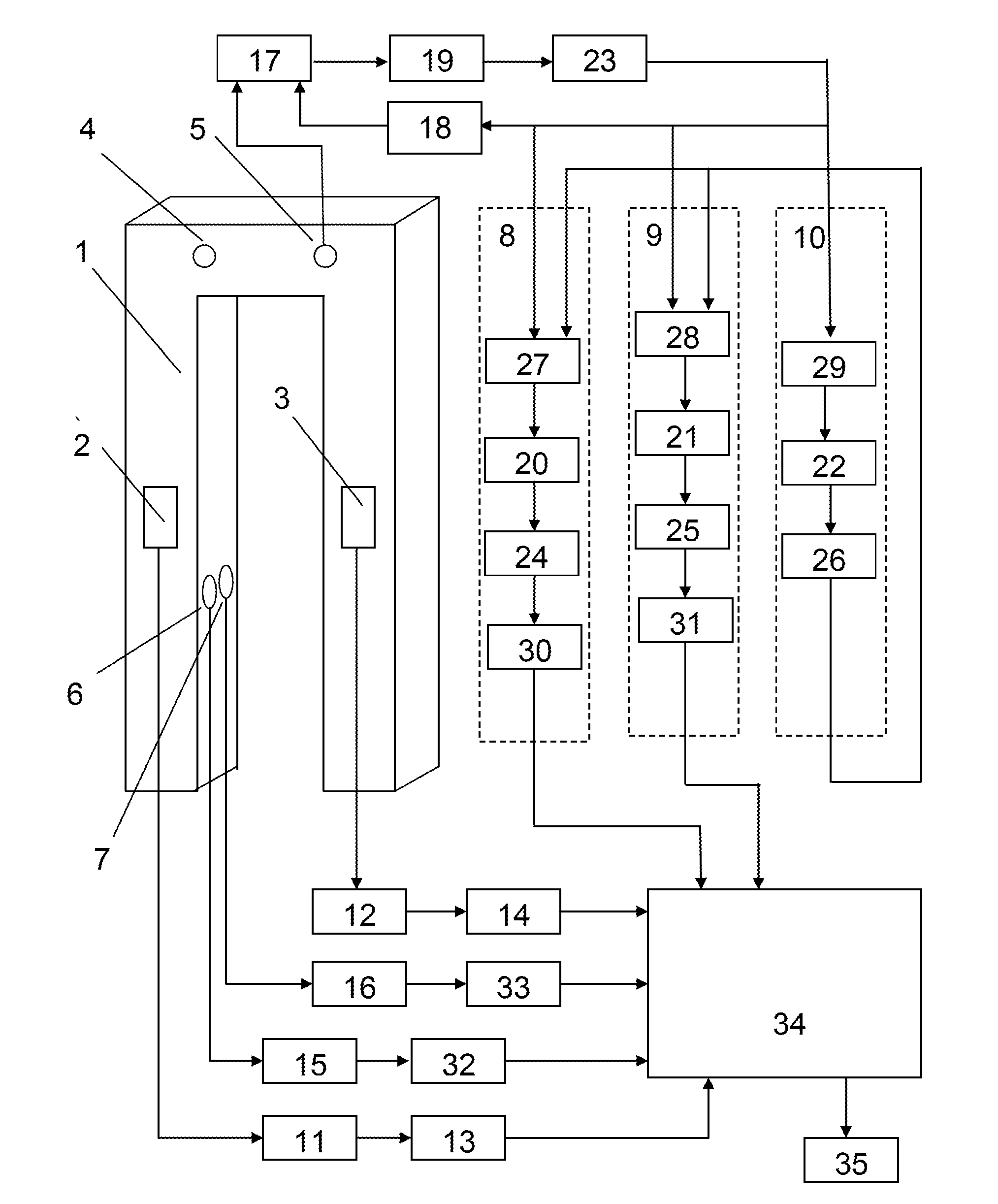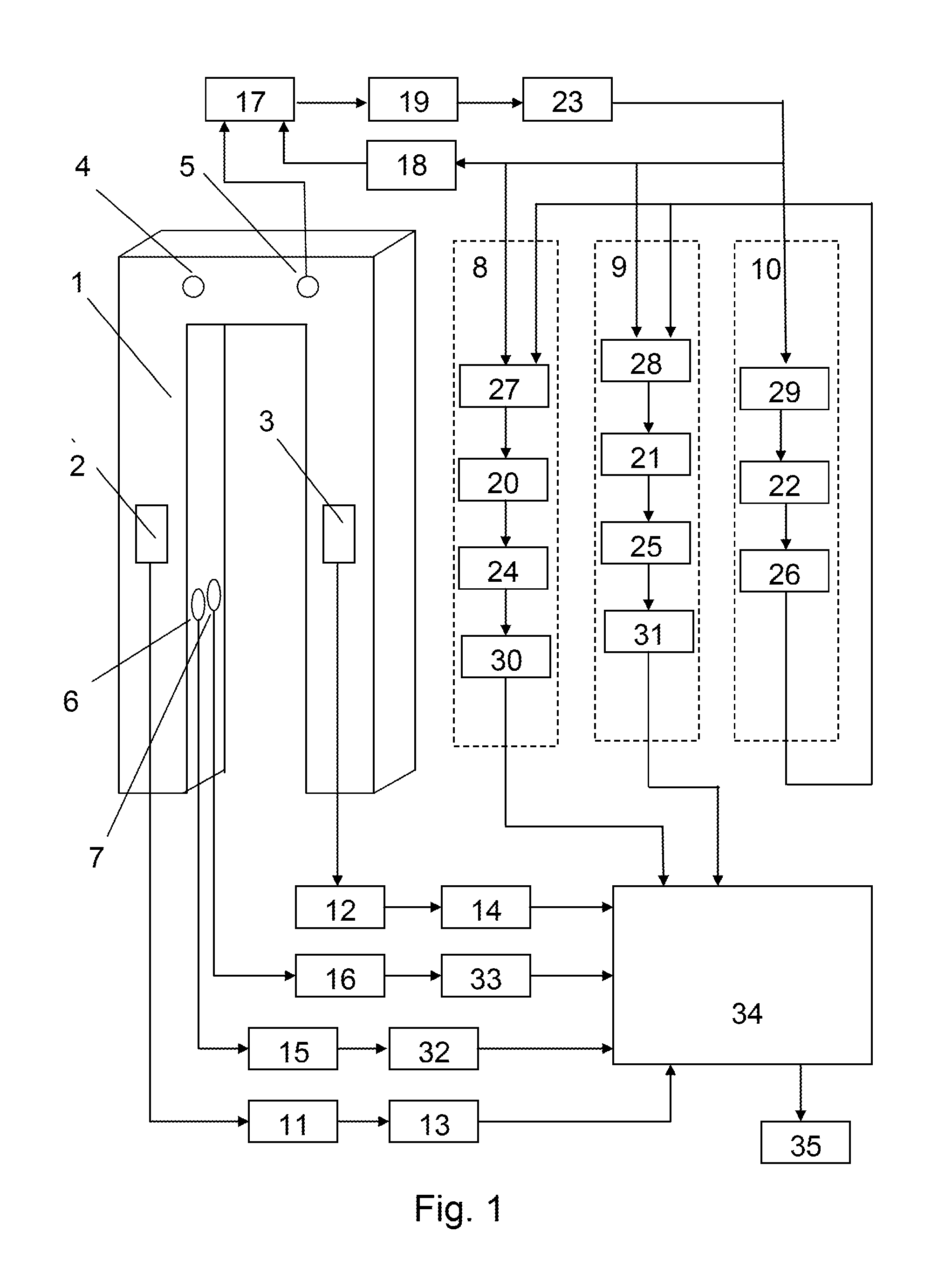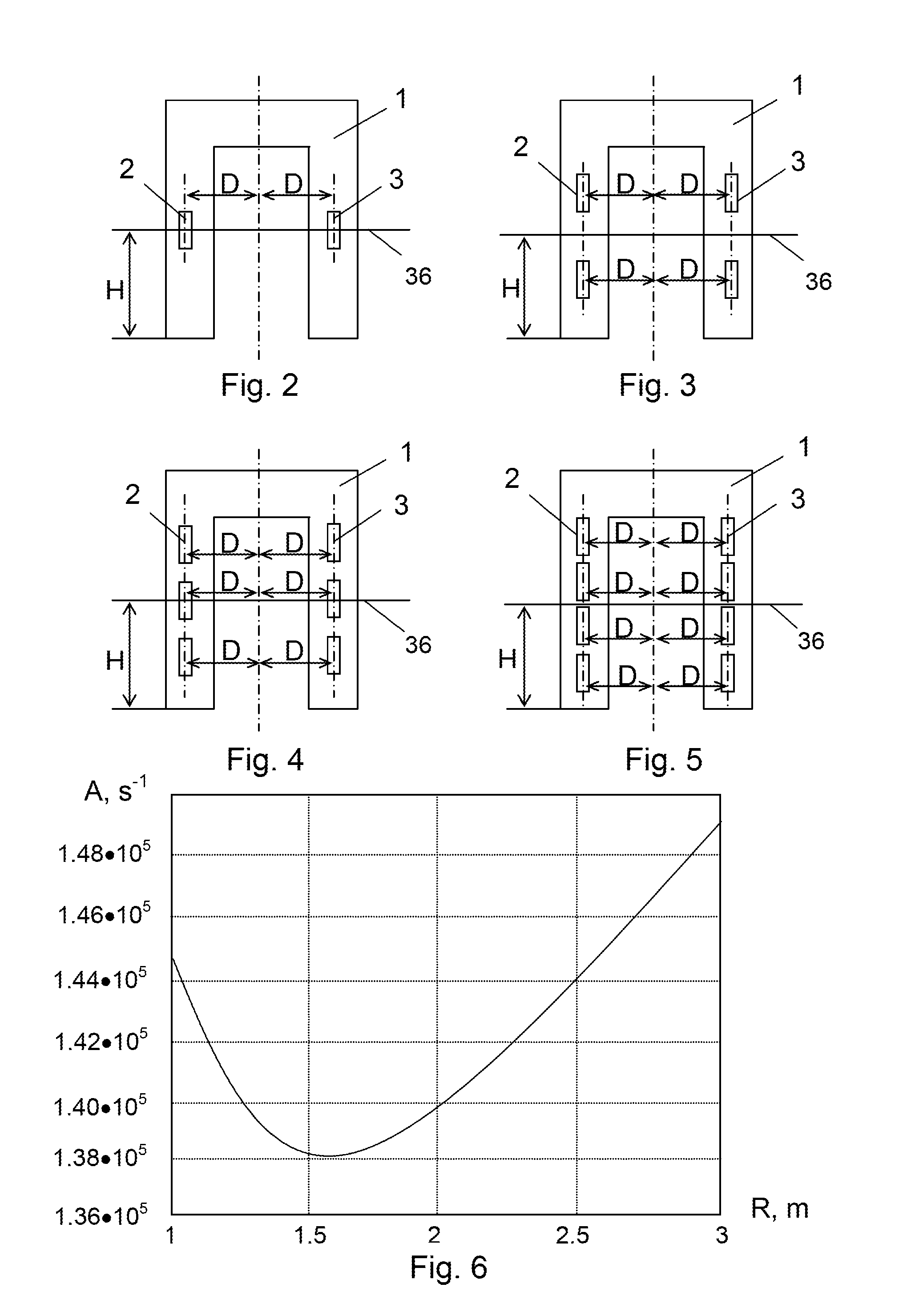However, methods for the detection of fissile materials, which are based on the detection of neutrons emitted by these materials and to which the known method is related, in practice makes possible to detect only certain types of fissile materials of significant
mass rarely used in the industry, but does not allow detecting these materials, having
mass from units to tens of grams.
The above mentioned known methods provide detection of radioactive materials in case if the controlled object is moved through a
control zone in accordance with established rules, but do not allow to detect movement across the zone of control of radioactive materials in the case of intentional violations of these regulations by controlled objects.
In addition, since the threshold for the number of gamma rays registered when the
test object presents in the control zone is established on the basis of pre-recorded background gamma-rays, intentional prolonged presence of controlled object with radioactive material or a container with of radioactive material near a zone of control leads to the increase in number of background gamma-rays registered by device and consequently to increase the preset threshold value, that can lead to this material
non detection when you move the radioactive material through a zone of control even in accordance with the rules.
In this regard, because the value of the time interval of gamma-rays registration when the
test object located in the control zone has a fixed value at the beginning of gamma radiation registration at considerable distance the from
test object to detectors of gamma radiation the share of gamma rays emitted by controlled object that detected by the gamma radiation detectors is turn out to be small, as a result probability of missing of detection of radioactive materials is increasing.
This would result in unreasonably inflated the threshold value for the registered gamma-rays, which can lead to missing radioactive material in its detection.
This also caused an increase in the probability of
non detection of radioactive material.
Therefore, here as in the case of the all above mentioned methods, due to fixed magnitude of the
value of time interval of gamma-rays registration in the presence of the test object in the control zone, in case of gamma-radiation registration at a considerable distance of object under control from gamma-
ray detectors the fraction of the emitted by the controlled object gamma rays detected by gamma-
ray detectors is turn out to be small which is resulted in increase of probability of missing a detection of radioactive materials.
This would result in unreasonably inflated threshold value for the registered gamma-rays, which can lead to missing radioactive material in its detection.
This also causes an increase in the probability of passage of radioactive material.
In the case of deliberate violations of these rules by the controlled objects during this method implementation the reliable detection of radioactive materials being moved through the zone of control is can not be provided.
Therefore, the drawbacks of this closest equivalent method are essential minimum mass of radioactive material, which in its implementation may be detect, as well as very
high probability of missing radioactive material, in particular, in deliberate opposition of controlled object to the detection procedure.
Therefore, these known devices provide detection of radioactive materials in case if the controlled object is moved through a control zone in accordance with established rules, but do not allow to detect the movement across the zone of control of radioactive materials in the case of intentional violations of the controlled objects of these regulations.
In addition, since the threshold for the number of gamma quanta registered in presence of the test object in the control zone is established on the basis of pre-recorded background gamma-rays, intentional prolonged presence of controlled object with radioactive material or a container of radioactive material near a zone of control leads to increase in the number of registered by device background gamma-rays and consequently to increase the preset threshold value, that when you move the radioactive material through a zone of control, even in accordance with the established rules can lead to this material omission.
This would result in unreasonably inflated the threshold value for the registered gamma-rays, which can lead to the omission of radioactive material in its detection.
This also causes an increase in the probability of omission of radioactive material.
This would result in unreasonably inflated the threshold value for the registered gamma-rays, which can lead to missing radioactive material in its detection.
This also causes an increase in the probability of passage of radioactive material.
These same factors lead to an increase in the minimum mass of radioactive material, which a portal radiation monitor can detect with a given probability of permits and false alarms.
In the case of deliberate violations of these rules by the controlled objects a portal radiation monitor does not allow reliable detection of radioactive materials being moved through the zone of control.
In addition, since the threshold for the number of gamma rays registered in presence of the test object in the control zone is established on the basis of pre-recorded background gamma-rays, intentional prolonged presence of the controlled object with radioactive material near a zone of control or a container of radioactive material left near the zone of control, leads to an increase in the number of registered by device background gamma rays and thereby to increase the preset threshold value, that when you move the radioactive material through a zone of control, even in accordance with the established rules can lead to omission of this material.
Therefore, the
disadvantage of the known radiation portal monitors, chosen for the closest equivalent, is an essential value of minimum mass of radioactive material, which the monitor is able to detect, as well as relatively
high probability of missing of radioactive material, in particular, in case of deliberate opposite-actions by controlled object to its operation.
 Login to View More
Login to View More  Login to View More
Login to View More 


